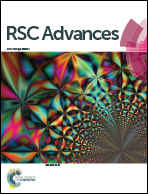First-principles investigation of the lattice vibrational properties of inorganic double helical XY (X = Li, Na, K, Rb, Cs; Y = P, As, Sb)
Abstract
Inorganic double helical XY (X = Li, Na, K, Rb, Cs; Y = P, As, Sb) materials are newly discovered compounds. Their structures are so simple that we can study their properties with first-principles calculations. Our calculation results show that their structures and lattice vibrational frequencies are sensitive to the cation (Li, Na, K, Rb, Cs) and anion (P, As, Sb). At the Γ point, there are 15 optical vibrational modes, in which the in-phase and out-of-phase breathing modes, dipole mode, and out-of-phase rotating mode are characteristic modes. Owing to the special double helical structure, the frequency of the in-phase breathing mode is always higher than that of the out-of-phase breathing mode. Furthermore, the frequencies of these two breathing modes evolve differently with cation and anion. The dipole mode and out-of-phase rotating mode are A2 modes. The frequency of the former decreases continuously from LiY to CsY, while the frequency of the latter firstly decreases, then increases, and finally approaches a stable value. Besides these characteristic modes, other modes are sensitive to ions, too. Our systematic calculation and analysis not only give much valuable insight into these newly discovered inorganic double helical XY, but also apply to other double helical compounds.


 Please wait while we load your content...
Please wait while we load your content...